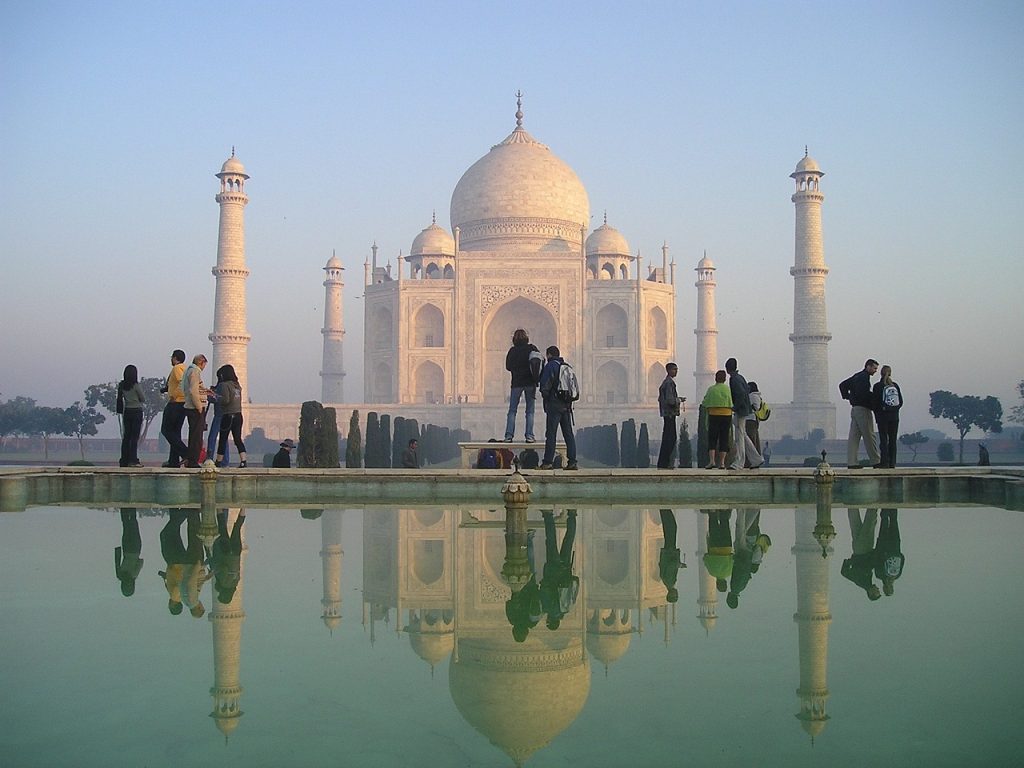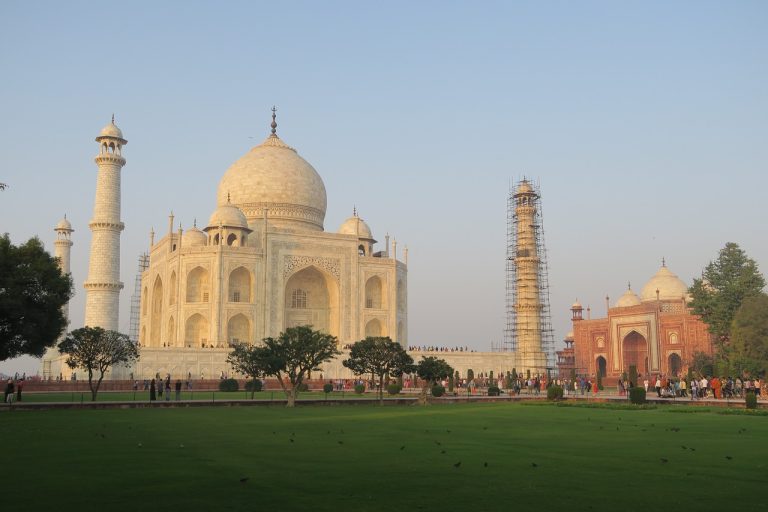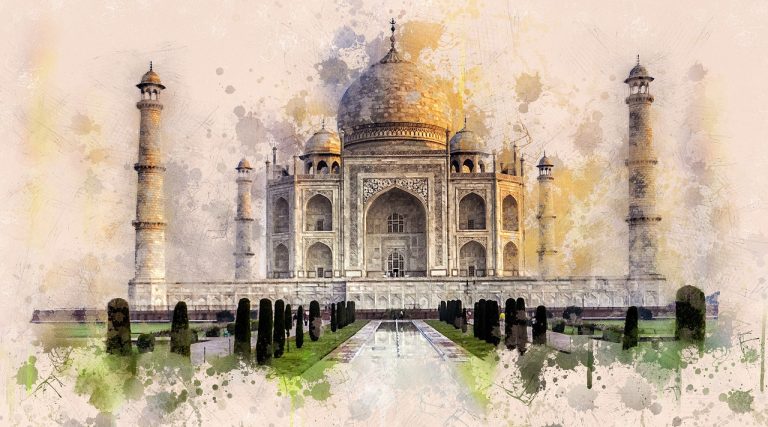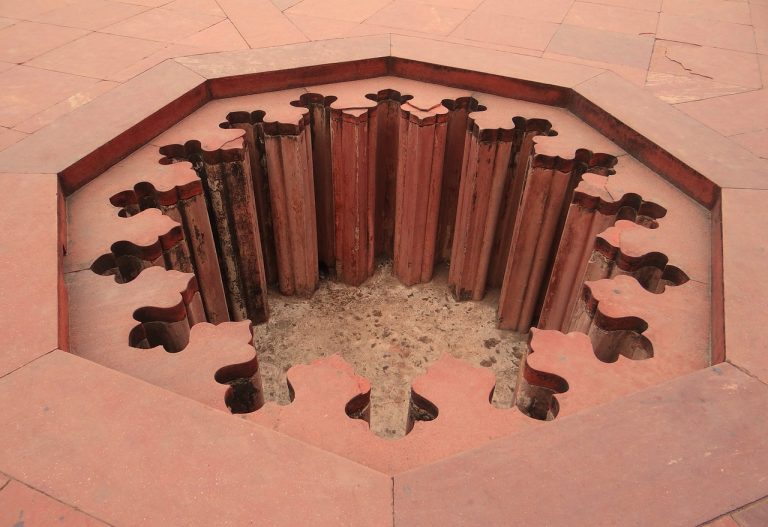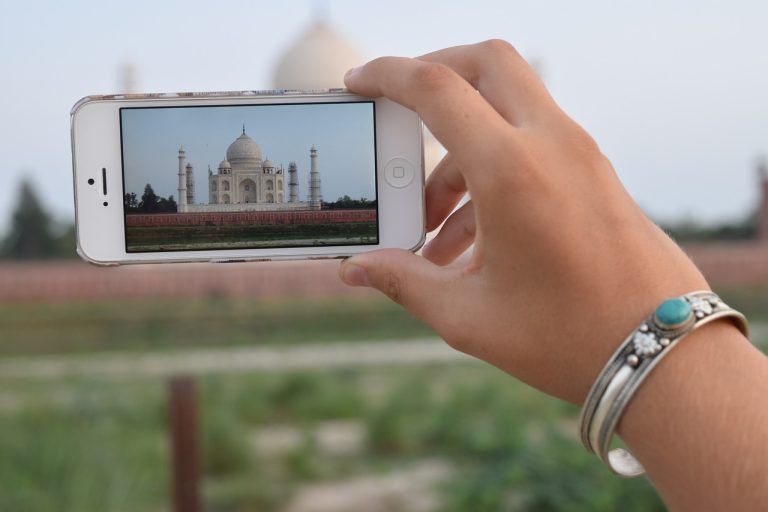Agra India Video
Historical Treasures of Agra India: Reliving the Past
Taj Mahal
The Taj Mahal is a UNESCO World Heritage Site and one of the most iconic landmarks in the world. Built by Emperor Shah Jahan in the 17th century, it is a mausoleum dedicated to his beloved wife, Mumtaz Mahal. This magnificent white marble structure is renowned for its symmetrical design and intricate carvings. It is considered a masterpiece of Mughal architecture and attracts millions of visitors each year.
- Architectural Marvel: The Taj Mahal is a prime example of Mughal architecture, combining elements of Persian, Islamic, and Indian styles. Its symmetrical layout, minarets, and domed structure make it a visual delight.
- Eternal Love: The Taj Mahal was built as a symbol of love by Emperor Shah Jahan for his wife, Mumtaz Mahal. The story behind its construction adds to its allure and romantic appeal.
- Garden Complex: Surrounding the Taj Mahal is a beautiful garden complex known as the Charbagh. It features geometrically arranged pathways, fountains, and lush greenery, providing a serene atmosphere.
- Intricate Inlays: The marble facade of the Taj Mahal is adorned with intricate inlays of semi-precious stones, forming delicate floral and geometric patterns. The craftsmanship is a testament to the skill and artistry of the artisans.
- Sunrise and Sunset Views: The Taj Mahal offers breathtaking views during sunrise and sunset. The changing hues of the monument against the backdrop of the sky create a mesmerizing sight.
Agra India Image 1:
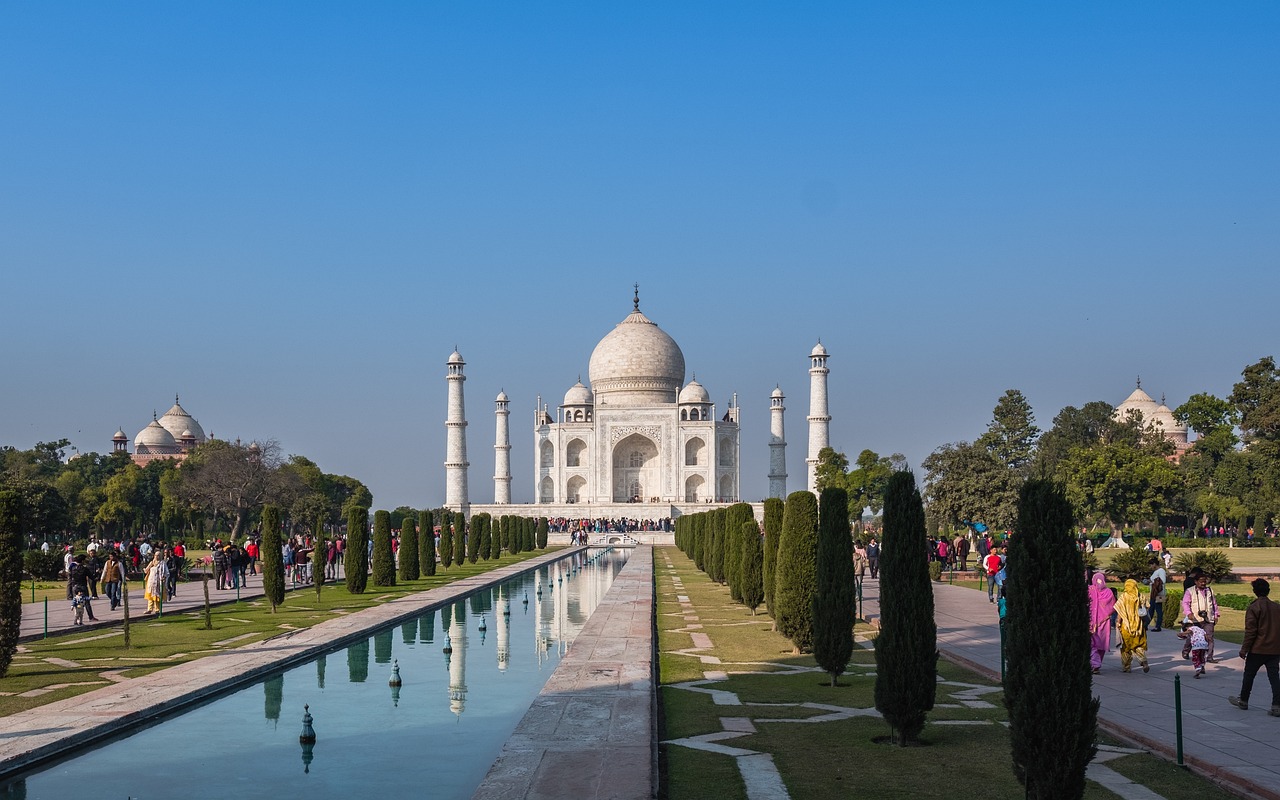
Agra Fort
Agra Fort, also known as the Red Fort of Agra, is another UNESCO World Heritage Site. It served as the main residence of the Mughal emperors until the capital was shifted to Delhi. The fort showcases a blend of Islamic and Hindu architectural elements and offers a glimpse into the grandeur of the Mughal Empire.
- Impressive Architecture: Agra Fort boasts impressive architecture with its red sandstone walls and intricate marble work. The fort complex includes various palaces, mosques, and gardens, each showcasing the opulence of the Mughal era.
- Diwan-i-Am: The Diwan-i-Am, or the Hall of Public Audience, was where the emperor would address the public and listen to their grievances. Its massive pillars and ornate decorations are a sight to behold.
- Diwan-i-Khas: The Diwan-i-Khas, or the Hall of Private Audience, was the place where the emperor held private meetings with important dignitaries. Its beautiful marble pavilion and intricately designed throne showcase the grandeur of the Mughal court.
- Jahangir Palace: The Jahangir Palace within the fort complex is a stunning example of Mughal architecture. It features delicate carvings, ornamental niches, and beautiful views of the Yamuna River.
- Khas Mahal: The Khas Mahal, or the Private Palace, was the emperor’s private residence within the fort. Its elegant design, including marble screens and beautiful gardens, reflects the luxurious lifestyle of the Mughal rulers.
Agra India Image 2:
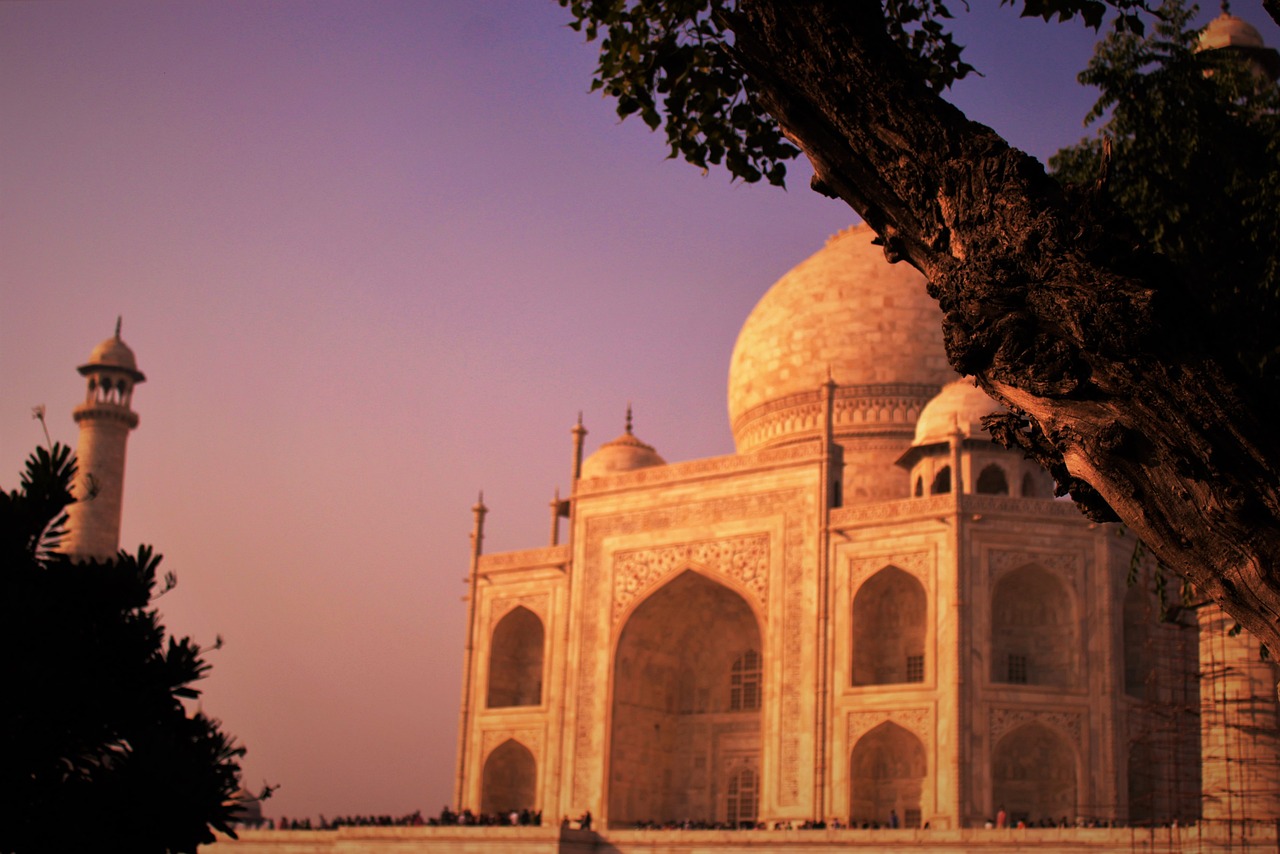
Fatehpur Sikri
Fatehpur Sikri is a deserted city located near Agra. It was built by Emperor Akbar in the 16th century and served as his capital for a short period. The city showcases a unique blend of Indian, Persian, and Islamic architectural styles and is a UNESCO World Heritage Site.
- Buland Darwaza: The Buland Darwaza, or the Gate of Magnificence, is one of the main attractions in Fatehpur Sikri. It is a massive gateway made of red sandstone and is considered one of the tallest gateways in the world.
- Jama Masjid: The Jama Masjid in Fatehpur Sikri is a grand mosque known for its elegant architecture. It features a central courtyard, intricately carved pillars, and a white marble mihrab.
- Panch Mahal: The Panch Mahal is a five-story palace in Fatehpur Sikri. It was used as a pleasure pavilion by the Mughal emperors and offers panoramic views of the surrounding area.
- Dewan-i-Khas: The Dewan-i-Khas in Fatehpur Sikri was the emperor’s private chamber where he held meetings with his courtiers. Its intricate carvings and beautiful marble work are a testament to the architectural brilliance of the Mughal era.
- Anup Talao: Anup Talao is a small pond located in Fatehpur Sikri. It is surrounded by four pavilions and was used for musical performances during the Mughal period.
Agra India Image 3:
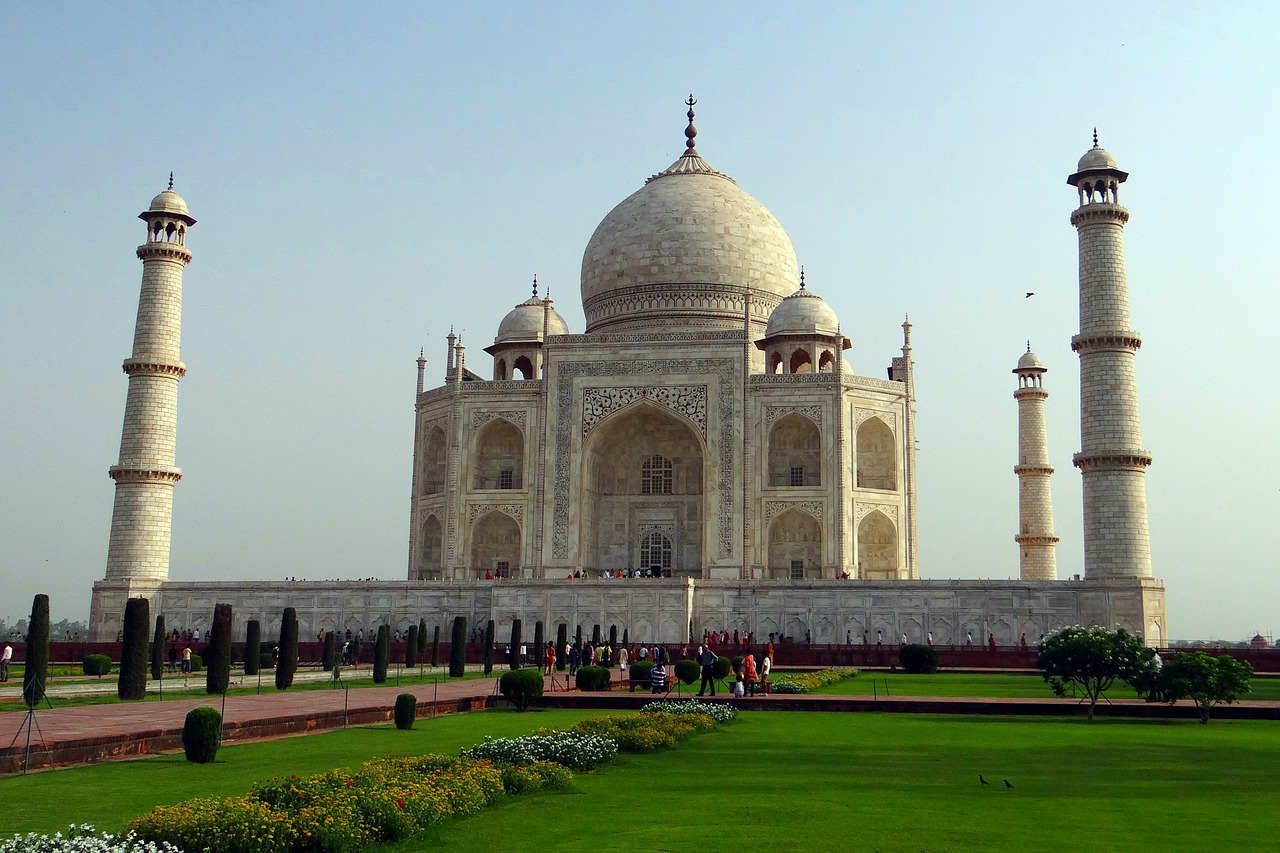
Itmad-ud-Daulah’s Tomb
Itmad-ud-Daulah’s Tomb, also known as the Baby Taj, is a Mughal mausoleum located on the eastern bank of the Yamuna River. It was built by Empress Nur Jahan for her father, Mirza Ghiyas Beg, and is considered a precursor to the Taj Mahal.
- Marble Marvel: The tomb is made of white marble with intricate inlay work of semi-precious stones. The delicate carvings and floral motifs make it a masterpiece of craftsmanship.
- Garden Setting: The tomb is surrounded by a charbagh-style garden, similar to the one at the Taj Mahal. The symmetrical layout and lush greenery enhance the beauty of the monument.
- Treasure Trove of Art: Itmad-ud-Daulah’s Tomb houses several exquisite marble screens, delicate jali work, and beautiful frescoes. The interior of the tomb is adorned with intricate paintings and floral designs.
- Riverfront Location: The tomb’s location on the banks of the Yamuna River offers scenic views and a tranquil ambiance. Visitors can enjoy a leisurely stroll along the riverfront.
- Historical Significance: Itmad-ud-Daulah’s Tomb is considered a significant monument in the history of Mughal architecture. Its design and craftsmanship influenced the subsequent construction of other Mughal mausoleums.
Conclusion
Agra, India, is a city rich in historical treasures that allow visitors to relive the grandeur of the Mughal era. From the iconic Taj Mahal to the majestic Agra Fort, each monument tells a story of love, power, and architectural brilliance. Fatehpur Sikri and Itmad-ud-Daulah’s Tomb add to the city’s cultural heritage, showcasing the diverse architectural styles of the Mughal period. Exploring these historical treasures is a journey back in time, providing a deeper understanding of India’s rich history and cultural heritage.
References
- unesco.org
- archaeologicalsurveyofindia.gov.in
- history.com
- britannica.com

